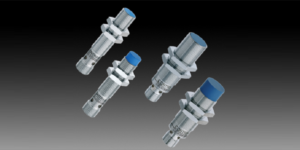The global recycling industry relies upon advances in technology to automate waste-recovery operations. These make it economic to recover an ever larger proportion of domestic and industrial waste. Waste-management companies are always looking for more affordable alternatives for sorting and separating mixed-metal scrap as some of the existing processes, while effective, are inflexible and expensive.
Advances in sensor technology and capabilities have seen the introduction of induction sorting, a process that identifies and separates different types of metallic material. A fast-moving conveyor carries pre-sized waste over a bank of inductive sensors mounted below the belt; the sensors detect and identify any non-ferrous material, which is subsequently ejected and separated by a targeted air-knife.
To take full advantage of the process, OEM equipment builders require robust sensors that differentiate accurately and at high speed between ferrous and non-ferrous material, allowing a single bank of sensors to process mixed-metal waste in a single pass. As the sensors may operate independently or in combination with other sensing technologies, an industry-standard communication interface is highly desirable.
Designers specified rugged inductive sensors from the Contrinex Smart Sensor portfolio; an array of 50 metal-cased sensors, embedded in a grid pattern immediately below the belt, provides continuous detection across the full width of the conveyor. Best-practice electronic design ensures that Smart Sensors are individually shielded and EMC immune, eliminating interference when multiple devices operate in close proximity.
Mounted only a few millimetres from the target as it passes overhead, these M18 devices, which have a nominal sensing distance of 10 mm for carbon steel, generate analogue output signals that vary according to the material type. The Smart Sensors are easily able to accommodate the required range of conveyor speeds.IO-Link connectivity, standard across the range, provides an industry-standard interface to the machine control system, triggering the appropriate air-knives as pieces of non-ferrous material reach the separator. During initial calibration, each sensor’s configuration is stored automatically on the local IO-Link Master; this allows plug-and-play replacement of sensors should the need arise, without any loss of functionality and without any need for recalibration.
Contrinex inductive Smart Sensors are designed with the needs of OEMs and system integrators in mind and provide an unobtrusive fit-and-forget solution. On-board data storage holds cumulative operating data for user-specified purposes, including predictive maintenance. These highly versatile sensors meet designers’ needs for a robust and cost-effective solution that delivers exceptional accuracy and reliability in a particularly challenging environment.
Find more information and read other application examples go to www.PLUSAx.co.uk
 Instrumentation Monthly Test | Measurement | Control
Instrumentation Monthly Test | Measurement | Control



